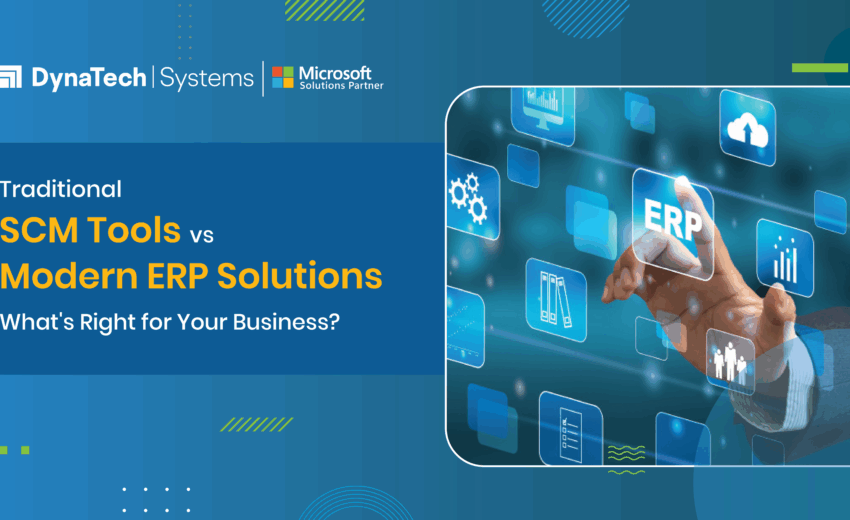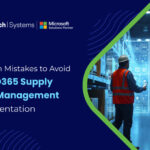
Imagine trying to navigate today’s global supply chain with a paper map while everyone else is using GPS. That’s precisely what it feels like when you’re still dependent on conventional SCM tools in a world driven by data, automation, and agility.
ERP vs Traditional Systems: Navigating the Supply Chain Evolution
Supply chains are no longer just about moving goods—they’re about anticipating demand, dealing with risks, optimizing costs, and delivering value quicker than ever before. And yet, many businesses still juggle disconnected systems, outdated spreadsheets, and siloed tools.
Here’s an important question:
Is your current supply chain tech helping you lead—or just letting you lag behind?
In this article, we will find out the actual difference between ERP and SCM tools, compare ERP vs conventional systems, and delve deeper into why more organizations are trading in their patchwork supply chain software for a single, unified ERP-integrated solution. We’ll also break down how modern challenges are making this shift not just smart—but fundamental.
Whether you’re scaling up, streamlining, or just trying to survive supply chain chaos, this read might just transform how you view your tech stack.
Traditional SCM Tools vs. Modern ERP-Integrated Solutions: A Tale of Two Eras
There was a time when conventional supply chain tools were the heroes of the operation floor—monitoring stock, managing logistics, and crunching demand forecasts. But as business landscapes expanded, those very tools started to show their age.
Let’s be honest—most conventional SCM systems were created for a different era. They operated in silos, lacked integration with other departments, and often called for hours of manual effort just to stitch together a complete picture. It was like trying to run a smart factory with flip phones.
What Traditional SCM Looked Like:
- Separate systems for inventory, procurement, and logistics—each speaking a different language altogether.
- Limitless data re-entry between tools, leading to duplication, errors, and slowdowns.
- Outmoded UIs, finite automation, and zero real-time visibility.
- Spreadsheets acted as the glue that hardly held everything together.
Fast-forward to today, the whole mode of operation has been transformed. Enter modern supply chain management, powered by ERP platforms like Microsoft Dynamics 365. These solutions aren’t merely upgrades—they’re complete transformations. Modern ERP-integrated SCM tools connect your whole operation, break down silos, and deliver one centralized source of truth for everything supply chain.
Here’s What Modern Looks Like:
- Real-time data access from a single dashboard—inventory, orders, suppliers, customers—all in a single place.
- Automated workflows that replace monotonous manual tasks.
- End-to-end visibility to foresee disruptions before they become an unsolvable issue.
- Seamless collaboration between supply chain, finance, sales, and customer service.
Understanding the Difference Between ERP and SCM
While ERP and SCM often work hand-in-hand, they serve distinct purposes in the business ecosystem. Think of ERP as the brain that runs your entire business, while SCM is the heartbeat that keeps your goods flowing hassle-free. Here’s a side-by-side breakdown that makes it crystal clear:
| Aspect | ERP (Enterprise Resource Planning) | SCM (Supply Chain Management) |
| Core Purpose | A centralized system to manage all business functions—finance, HR, sales, supply chain, etc. | Focuses specifically on the flow of goods, information, and logistics from suppliers to customers. |
| Scope | Enterprise-wide—covers almost every department | Primarily concerned with supply chain operations |
| Functionality | Accounting, procurement, sales, HR, project management, inventory, customer service, etc. | Procurement, inventory, warehousing, logistics, vendor and distribution management |
| Data Handling | Unifies and synchronizes data across departments for a “single source of truth” | Tracks supply chain-specific data like order status, supplier performance, and delivery timelines |
| Goal | Boost efficiency and visibility across all business processes | Optimize the supply chain for cost-efficiency, speed, and resilience |
| Integration | Acts as the backbone of the organization, often integrating SCM modules | Can function independently or as part of an ERP suite for broader capability |
| Decision-Making | Offers insights across the enterprise for better strategic decisions | Enables better operational decisions within the supply chain |
| Technology Trend | Cloud ERP platforms like Microsoft Dynamics 365 unify all functions | SCM tools embedded into ERP platforms for smarter, real-time visibility and planning |
Why It Matters: SCM Software vs ERP Software
The conversation around SCM software vs ERP software is no longer about selecting one over the other. Instead, it’s about how well your SCM capabilities are embedded within a unified ERP system.
A disconnected supply chain results in inadequate forecasting, prolonged shipments, and dissatisfied customers. An ERP-integrated approach, on the other hand, ensures trouble-free coordination between your warehousing, finance, procurement, and sales departments—creating a fluid, responsive ecosystem.





